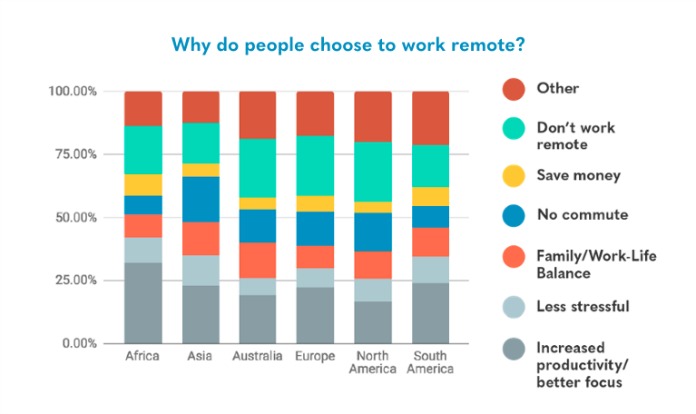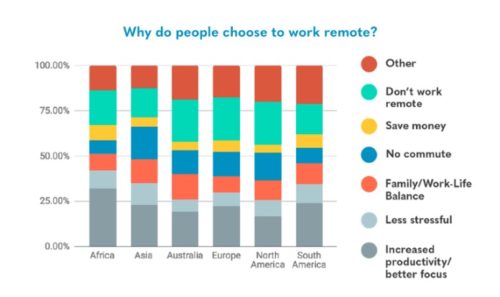
Despite a plethora of offerings intended to foster collaboration among scattered workers, the growth remote employees is merely inching along.
According to Owl Labs’ 2018 Global State of Remote Work Report, 56 percent of employers now offer remote work opportunities of some kind. That’s down from 85 percent last year. Meanwhile, 44 percent of companies don’t allow remote work at all, while 16 percent have completely remote workforces.
In the U.S., the 52 percent of employees work remotely at least one day a week, the same number as in 2017. Globally, 68 percent worked remotely at least one day a month, down from 70 percent last year.
Owl Labs provides video conferencing hardware tools, so obviously they have skin in this game. Not surprisingly, the report emphasizes the market’s growth potential and the advantages of providing remote-work options. However, we give them credit for publishing numbers they’re probably not all that happy about.
A Remote Work Snapshot
It’s important to keep the report in context: It presents a snapshot in time, and so doesn’t incorporate other studies that conclude, for example, that remote workers will be nipping at the on-premise workforce’s heels by 2025. Telecommunications companies, in particular, are banking on this trend, developing tools to connect employees working at distant locations and assuming many of those locations will be a home office.
The report compiled data from some 3,000 employees across six continents and, besides looking at market trends, analyzed how remote work impacts employment opportunities, job satisfaction and access to work.
It found that companies that are either fully remote or offer the option of working remotely (Owl Labs refers to the latter as “hybrid” organizations) have higher employee satisfaction rates. For example, workers who can do their jobs remotely at least once a month are 24 percent happier than those who are office-bound, its report said.
Employees See Upsides

Across industries, respondents said working out of the office provides them with “more opportunities for quality employment.” That was especially true among finance and insurance professionals (40 percent).
Increased productivity and focus was the most cited reason for working from home this year. In 2017, the top reason was to achieve a healthy work-life balance. Respondents in North America were most likely to focus on avoiding a regular commute.
However, in the U.S., the number of individual contributors who worked remotely full-time plunged. Last year, full-time remote workers were twice as likely to be individuals rather than managers. In 2018, individuals were only 20 percent more likely to work outside the office. Vice presidents were the most likely to be fully remote compared to other roles.
Owl Labs argues that remote work provides more opportunities for global employment, as remote work hasn’t been evenly adopted. Globally, 16 percent of employers are fully remote. Africa and Australia have the most fully remote and hybrid companies, at 59 percent and 60 percent respectively. Asia and South America are the laggards, with each having 9 percent more companies that don’t allow remote work than the global average.
Sign up for our newsletter here.















